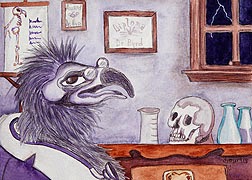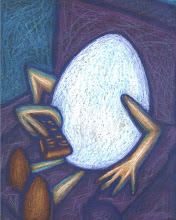Turquoise Cross
Write up:
"materials: colorful swirled green stained glass
with copper wire and a polished stone turquoise howlite in the center.
This cross was hand-made by me, dianne curtis using
stained glass and copper.
I use a special technique for placing my solder in a decorative style similar to the old medieval Romanesque crosses I love so much. The bent wire hanger and lightweight design allows it to be hung anywhere a push pin can go. This particular cross has beautiful, white swirls going through clear, deep blue and iridescent glass."
I use a special technique for placing my solder in a decorative style similar to the old medieval Romanesque crosses I love so much. The bent wire hanger and lightweight design allows it to be hung anywhere a push pin can go. This particular cross has beautiful, white swirls going through clear, deep blue and iridescent glass."
Turquoise Romanesque Cross
My favorite
art style during the Middle Ages was the Romanesque style which references the
11th and 12th century in Europe. This was a prosperous time when artisans
looked back at a great empire and tried to mimic the art left by the Romans. Unfortunately,
the skills and training threat the roman artisans had was not readily available
but many of the old traditions were preserved in Byzantium and the artists from
Constantinople were traveling to the Roman Catholic world. They brought their
skills with them and shared these styles with the monasteries where crosses and
small figurines were in demand. In fact, this was such a lucrative trade that
many of the monasteries became rich off of selling 'cloister crafts' to
medieval Christian families.
Like these
early Christians, I share an appreciation for Roman style and skill. I love the
mixed metals they used and even thought they did this because of lack of resources;
the 'marriage' of more than one metal into an art form creates a beautiful
style. I've always loved copper and silver or lead together so I really enjoy
making these crosses. Every one of them is a unique, one-of-a-kind work of art.
I've sold over a hundred of them to different churches and people browsing
through crafts fairs and festivals.
This cross is available on ebay:











